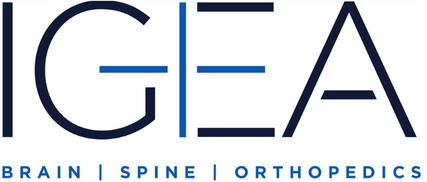SPINAL CORD AND OCCIPITAL NERVE STIMULATION SPECIALISTS IN NEW JERSY & NEW YORK
Neurostimulation is a therapy designed to treat chronic pain when all other treatment modalities have failed. This treatment technique intercepts pain signals before they reach the brain and replaces them with a different, more pleasant sensation. Neurostimulation is most commonly performed on the spinal cord (within the cervical and lumbar sections of the spine) and the occipital nerves.
SPINAL CORD STIMULATION
Spinal cord stimulation (SCS)—also known as dorsal column stimulation—is a procedure in which a device known as a pulse generator is surgically implanted beneath the skin to manage chronic back pain. The pulse generator sends electrical impulses through wires with electrodes attached in order to achieve proper Neurostimulation. The device has various settings that affect impulse strength.
SCS is performed in two stages: trial stimulation and permanent implantation of the device.
STAGE 1: TRAIL STIMULATION
Trial stimulation is necessary to determine if SCS is effective. During the procedure, temporary wires—guided by fluoroscopy, a special type of X-ray—are placed on the spinal cord and attached to an external battery that is worn on a belt. Patients will be asked to keep a written log of all the stimulation settings during various activities, including the level of pain relief. After a short trial period, patients will return to discuss results and determine if permanent implantation is an option.
STAGE 2: PERMANENT IMPLANTATION
If patients have success with the trial process, permanent implantation is the next step. During this procedure, the wires are positioned in the necessary areas and are briefly tested to ensure correct placement. The wires are then sutured in place.
Once the wires are secured, the surgeon creates a pocket between the skin and muscle layers to insert the stimulation device. The wires are connected to the device, and the incision is then closed.
WHO IS A CANDIDATE FOR SPINAL CORD STIMULATION?
Patients who may qualify for SCS have exhausted all other methods of treatment and have chronic back pain caused by:
- A spinal cord injury
- Arachnoiditis: A painful inflammation of one of the protective coverings of the spinal nerves (meninges)
- Complex regional pain syndrome (formerly known as reflex sympathetic dystrophy): A nervous system disorder in which patients suffer from constant burning pain, usually in the hand or foot
- Degenerative conditions, including arthritis, spinal stenosis or degenerative disc disease
- Failed back surgery syndrome: A syndrome when prior surgery fails to control persistent back and leg pain
OCCIPITAL NERVE STIMULATION
Occipital nerve stimulation (ONS) is a procedure in which wires with electrodes are placed on the occipital nerves to deliver electric impulses from a Neurostimulation device similar to that of a pacemaker for the heart. These impulses help to manage the pain associated with chronic headaches and migraines when all other methods of treatment have failed.
Like SCS, ONS is performed in two stages: trial stimulation and permanent implantation of the device.
STAGE 1: TRIAL STIMULATION
Trial stimulation is necessary to determine if ONS is effective. During the procedure, temporary wires—guided by fluoroscopy, a special type of X-ray—are inserted into the base of the skull and placed on the occipital nerves. They are then attached to an external battery that is worn on a belt. Patients will be asked to keep a written log of all the stimulation settings during various activities, including the level of pain relief. After a short trial period, patients will return to discuss results and determine if permanent implantation is an option.
STAGE 2: PERMANENT IMPLANTATION
If patients have success with the trial process, permanent implantation is the next step. During the procedure, the wires are positioned in the necessary areas and briefly tested to ensure correct placement. The wires are then sutured in place.
Once the wires are secured, the surgeon creates a pocket between the skin and muscle layers to insert the stimulation device (usually in the buttock, chest, low abdomen underneath the shoulder blade or below the clavicle). The wires are connected to the device, and the incision is then closed.
WHO IS A CANDIDATE FOR OCCIPITAL NERVE STIMULATION
Patients who may qualify for ONS have exhausted all other methods of treatment for chronic headache and have conditions, including:
- Cluster headache: A series of headaches that occur once/every other day to eight/day, lasting weeks to months at a time
- Hemicrania continua (HC): A chronic type of headache that appears on one side of the head and occurs daily without any pain-free moments
- Migraine: A severe headache on one side of the head accompanied by nausea, vomiting and light/sound sensitivity
COMPLETE BRAIN & SPINE CARE
At IGEA Brain & Spine, we specialize in Neurostimulation for patients living with certain spine and headache-related conditions. We are one of the premier practices in the tri-state area offering SCS therapies and work with Medtronic, St. Jude Medical™, Boston Scientific, Nevro® and Nuvectra™. Utilizing the latest tools and techniques, we provide a superior quality of care for this and other brain, spine and neuroendovascular conditions.
For more information or to schedule an appointment, contact us today.

